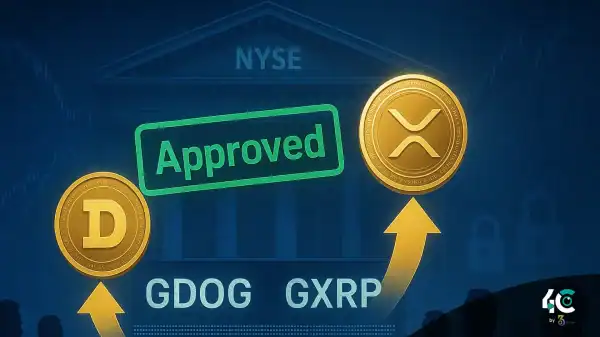Whale watching in crypto reveals how large transactions and major players impact market trends, prices, and investor sentiment across digital assets.
Understanding Whale Activity in Crypto Markets
In cryptocurrency, whales are those people or entities that possess large amounts of tokens in their wallets. These people or institutions have large amounts of coins such as Bitcoin (BTC), Ethereum (ETH), or other altcoins. They can influence supply and demand.
What Defines a Whale?
A whale is typically an entity that controls wallets valued in millions of dollars. For example.
- A Bitcoin whale might own thousands of BTC.
- An Ethereum whale could hold hundreds of thousands of ETH.
When these whales move their wealth, whether it is selling, buying, or transferring funds, there are big price moves.
How Whale Transactions Impact Market Trends
Cryptocurrencies can be affected by whales’ activity.
1. Price Volatility
When whales make large sales or purchases, this can disrupt prices. For instance.
- A large sell order brings more supply into the market, and the price drops.
- A big purchase order takes the liquidity available, and prices rise.
2. Market Sentiment Shifts
Whale transactions often signal shifts in sentiment. For example.
- Shifting money from exchanges into personal wallets may show bullishness.
- Moving coins to exchanges might indicate readiness for a sale (bearish).
3. Liquidity Changes
Whales contribute to market liquidity through their trades. But large withdrawals can trigger a liquidity shortage, resulting in a spike in price volatility.
4. Psychological Effects
Smaller investors often monitor whale activity closely. When large trades occur, it can cause fear or excitement among retail traders, which can in turn affect the market.
- Tools and Techniques to Track Whale Activity
- To properly analyze whale activity, you will need real-time data. Here’s how you can begin.
1. Blockchain Explorers
You can track a wallet address and its transaction flow on platforms such as Etherscan, Blockchair, and Blockchain.com Explorer. Look for.
- The system handles large transfers between wallets and exchanges.
- There have been unusual spikes in transaction volume.
Specialized services offer deeper insights into whale behavior.
- Glassnode provides metrics like exchange inflows and outflows, and holder distribution.
- Sentiment: Monitors whale clusters and social sentiment for specific assets.
- Nansen allows you to see labeled wallets that belong to known entities, like exchanges.
3. Social Media and News Outlets
Whales like to show up at the right time. You can gain more context from large transactions through monitoring platforms such as Twitter, Telegram, and Reddit.
Interpreting Whale Activity for Market Predictions
Tracking whale movements has value, but interpreting what they are doing is tricky. Below are common scenarios and what they might indicate.
Scenario 1: Moving Plenty of Funds to Exchanges
- It may mean the whale is getting ready to sell, which means bearish.
- Actionable Insight: If you spot the same pattern on multiple wallets, consider reducing exposure.
Scenario 2: Accumulation of Exchanges
- There’s some speculation that the whale is shifting funds to private wallets, potentially for long-term holding.
- Here’s a fantastic opportunity to accumulate before future price rises.
Scenario 3: Spike in the number of transactions
One of the possible interpretations of this message is that a lot of trading activity or institutional interest is likely going on.
- Check if the market supports this spike for better confirmation of its validity.
- In early 2024, several transactions involving Bitcoin whales featured prominently in the news, causing considerable speculation.
- A dormant wallet holding 25,000 BTC woke up and transferred to an exchange.
- Within hours, Bitcoin’s price fell by 8% in response to some perceived selling pressure.
Further analysis showed the coins were not sold; rather, they were moved to cold storage. This false alarm shows how important it is to verify assumptions before acting on whales.
The risks and Limitations of Relying on Whale Data
Though useful, whale activity analysis has caveats.
1. Misinterpretation Risks
Not all large transactions have clear intentions. Moving funds between wallets doesn’t necessarily imply trading activities, for instance.
2. Manipulation Concerns
Some whales send false signals deliberately to spoof. Always cross-reference data with other indicators.
3. Lagging Indicators
The market may have already reacted before any visible whale activity occurs. Timing your trades accordingly is crucial.
In conclusion, use whales to get success
Looking at whale activity can provide insights into cryptocurrency market forces. Traders analyze high-value transactions. Such analysis gives insight into price predictions. And traders can adjust their trade plan accordingly. Nonetheless, one should not invest all your money just based on whale data and do your own due diligence!
If you’re ready to go deep with blockchain analytics and the psychology of the marketplace, then whale behavior may help give you an edge in crypto trading.
Conclusion
Monitoring whales in the crypto market is crucial to being able to predict favorable price action in any altcoin. Utilize tools ranging from blockchain explorers to on-chain analytics platforms to social media monitoring for analysis. Whale data can be useful, but it should be used with caution and alongside other indicators to avoid errors. When a crypto trader masters this skill, he/she anticipates market shifts and, consequently, makes informed decisions with confidence.


































